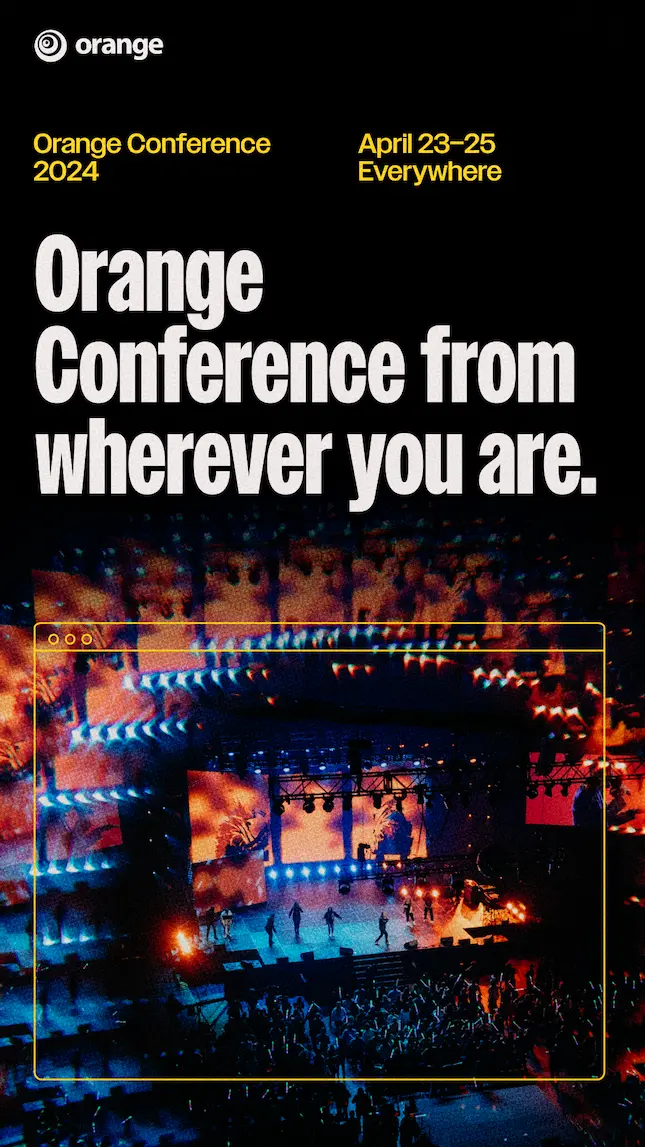“I believe that this nation should commit itself to achieving the goal, before this decade is out, of landing a man on the Moon and returning him safely to the Earth.” – President John F. Kennedy, May 25, 1961
Vision. It’s a term that’s thrown around a lot in business and in churches. It can have many different meanings and, in my experience, the term alone is confusing to most people. People confuse it with mission and strategy. It gets used generally without a clear explanation. It’s often shared throughout a church without any way of knowing whether or not it’s being realized or not.
So, what is vision?
A popular definition of vision comes from Andy Stanley:
“A mental picture of what could be, fueled by a passion that it should be.”
It can also be described as a solution to a problem, with urgency. Vision can be macro level, as in the picture of where an entire church wants to be at some point in the future. Vision can also be micro, as in what a kid’s check-in station should look like before each service on the weekends. It’s all of those things, which is why it can be confusing and difficult to communicate.
Why Vision Matters
Make no mistake, vision matters. It matters a lot. In churches in particular, there are a lot of things we can do and a lot of ways we can do them. There is no shortage of ideas and methods for how churches can carry out the Great Commission in their context. In fact, there are far more ideas than there is time, people and resources to carry them out. This is where vision comes in.
It’s important for us to clarify the vision for our churches, for each ministry, for each volunteer role, and for every aspect of what we do. Without it, people will pursue their own vision of what “should be” and we’ll end up diluting our efforts. A clear vision helps people be on the same page and that kind of focus is powerful. A clear vision also helps people decide if they’re in or they’re out, and that is much better than the middle ground where everyone is fighting for their own preferences.
Vision also matters because it’s easy to be successful at the wrong thing. We can work tirelessly and rally others to join us, all while missing the mark we set out to hit in the first place. A clear vision helps us know if we’re succeeding at the right thing or not, and it helps us celebrate those victories along the way.
A Framework for Creating and Casting Vision
Knowing what vision is and why it’s important, the biggest challenge is creating a compelling vision and casting it regularly to those we lead. With that in mind, here is a framework that might be helpful as you communicate vision to your team.
Clarify the Vision
The first step is to clarify vision. What is the preferred future we’re trying to create? I like to start at the macro level. What is the clear, concise statement that helps people picture that future? Our church’s vision is to reach people who are not a part of any church. That’s broad, but we can know if we’re doing that or not.
One thing to note, however, is that there isn’t a measurable goal attached to that. You’ll notice in JFK’s quote above that he attached a measure to it, “before this decade is out.” I think you can have vision statements without measures, but it’s great to add in a measure from time to time to give people a clear milestone to hit.
A clear, concise vision statement isn’t just for the overall vision. Here are the areas in which we could benefit from having a clear vision statement:
Vision for our church
Vision for our ministry
Vision for each event/program
Vision for each volunteer role
What would a simple, concise statement look like for each of those?
Cast the Vision
Once the vision is clarified, we must share it. This isn’t a one-time thing, though. We must share it over and over and over again. Here is an example of how we can cast vision regularly to our team.
Include it in the volunteer onboarding process. We can talk about the vision at a macro level and connect the dots so people see how they can help us reach that vision through volunteering.
Include it in volunteer job descriptions. It’s extremely helpful to include the overall vision and the vision for each role in a job description. We can walk through that with new volunteers as they come on board and every time we meet with them going forward.
Include it in communication. It’s helpful to include vision in every email, every text, and every social media post we send to our volunteers.
Include it at every training. Every time volunteers are gathered for a training, whether in large or small settings, we should talk about the vision and remind them of what we’re going for and why it matters.
Include it in volunteer huddles. Every time volunteers serve there is an opportunity to gather them together and cast vision.
Include it in weekly meetings. Casting vision well starts with casting it among staff. Talk about vision in weekly meetings as a staff team to make sure it’s clear where it matters most.
Include stories to celebrate it. In all the ways we share vision, it’s important to share stories that are examples of the vision being realized. Stories do more to communicate vision than anything else.
How can you include vision in all of those areas to ensure it is shared regularly?
Multiply the Vision
If you’re able to clarify the vision and cast it in those areas mentioned above, you’re in a great place. However, for vision to ultimately succeed it must be carried by everyone, not just you. It’s not enough to simply communicate vision, there must be buy-in.
I learned a great structure for understanding buy-in and how it can work from Pastor Daniel Floyd. He shared levels of buy-in that we talk about often as it relates to different levels of volunteer leadership in our church. Here are the levels:
Level 1: Understand – At the base level, people should understand the vision so it makes sense to them.
Level 2: Embrace – Once they understand the vision, they must embrace it personally and live it out in their role.
Level 3: Communicate – Anyone who leads a team of people must not only understand and embrace the vision, but also communicate it to others.
Level 4: Defend – The highest level of buy-in comes when people defend the vision. They can defend it by simply explaining why or by engaging in healthy conflict when there are disagreements over the vision.
Think about those levels as they relate to your volunteers.
At what level should each volunteer role buy-in?
What would it look like to train them so they not only understand the vision, but they also understand their role in sharing it?
What if volunteers could buy-in at level 3 and level 4 and cast vision in the same ways we talked about already, emails, huddles, trainings, 1-on-1 meetings, etc.?
President Kennedy shared a bold, compelling, clear vision on that day in 1961 when he challenged our nation to do something that had never been done before. Space exploration has been the catalyst for a great many technological advances in our world, yet it pales in comparison to the mission we have to reach lost people.
How are you creating, casting and multiplying vision?



